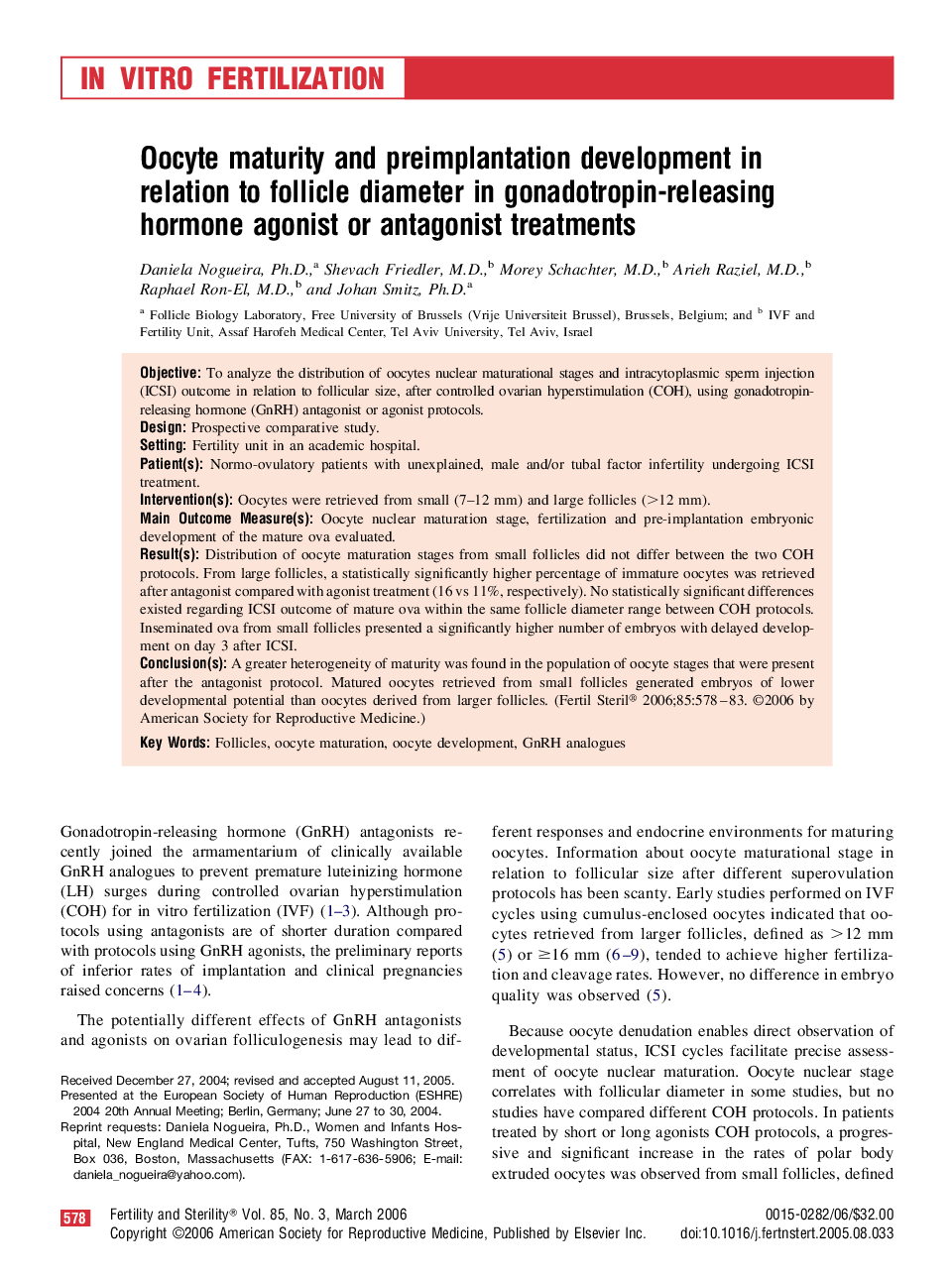| Article ID | Journal | Published Year | Pages | File Type |
|---|---|---|---|---|
| 3940709 | Fertility and Sterility | 2006 | 6 Pages |
ObjectiveTo analyze the distribution of oocytes nuclear maturational stages and intracytoplasmic sperm injection (ICSI) outcome in relation to follicular size, after controlled ovarian hyperstimulation (COH), using gonadotropin-releasing hormone (GnRH) antagonist or agonist protocols.DesignProspective comparative study.SettingFertility unit in an academic hospital.Patient(s)Normo-ovulatory patients with unexplained, male and/or tubal factor infertility undergoing ICSI treatment.Intervention(s)Oocytes were retrieved from small (7–12 mm) and large follicles (>12 mm).Main Outcome Measure(s)Oocyte nuclear maturation stage, fertilization and pre-implantation embryonic development of the mature ova evaluated.Result(s)Distribution of oocyte maturation stages from small follicles did not differ between the two COH protocols. From large follicles, a statistically significantly higher percentage of immature oocytes was retrieved after antagonist compared with agonist treatment (16 vs 11%, respectively). No statistically significant differences existed regarding ICSI outcome of mature ova within the same follicle diameter range between COH protocols. Inseminated ova from small follicles presented a significantly higher number of embryos with delayed development on day 3 after ICSI.Conclusion(s)A greater heterogeneity of maturity was found in the population of oocyte stages that were present after the antagonist protocol. Matured oocytes retrieved from small follicles generated embryos of lower developmental potential than oocytes derived from larger follicles.
